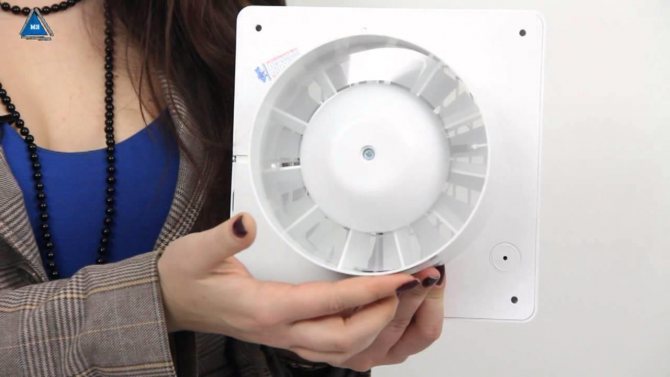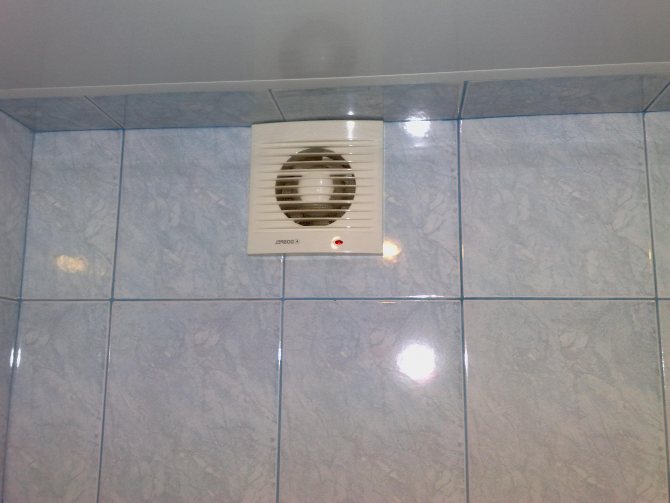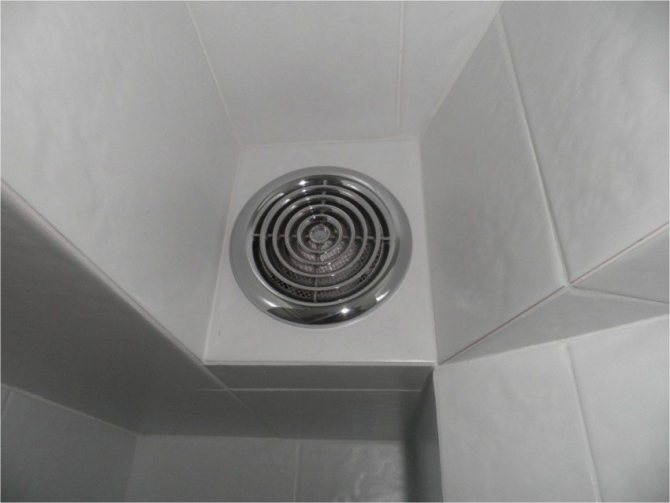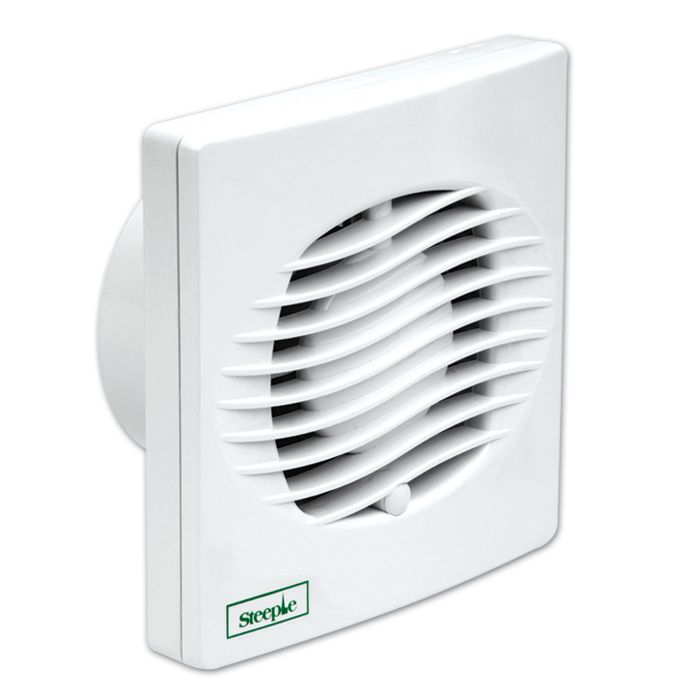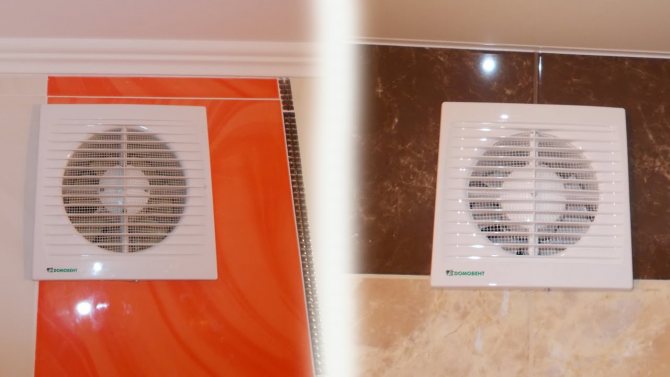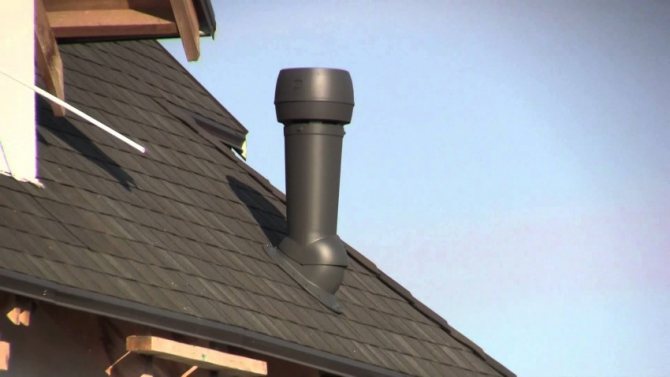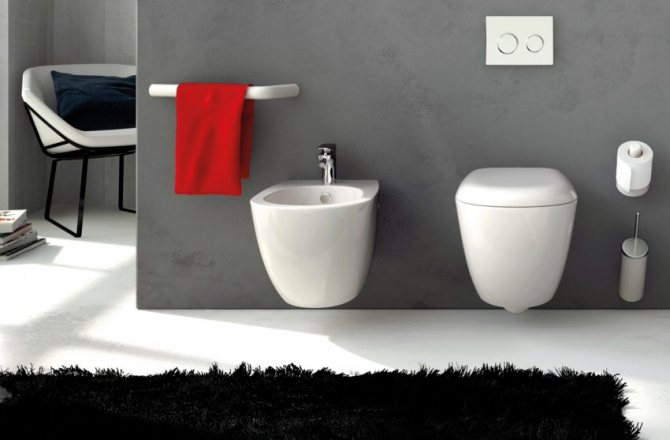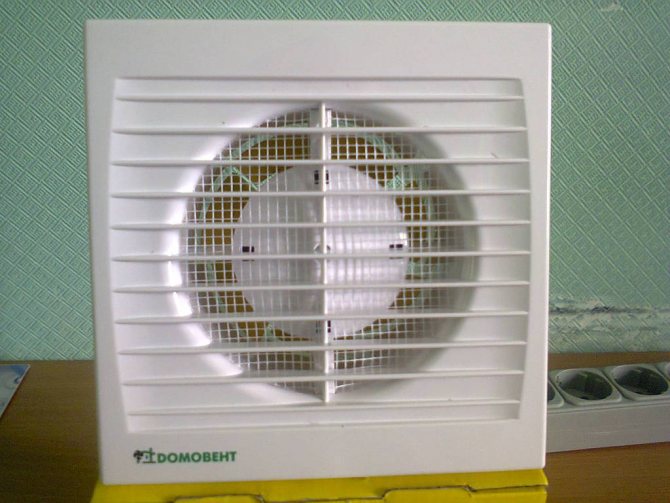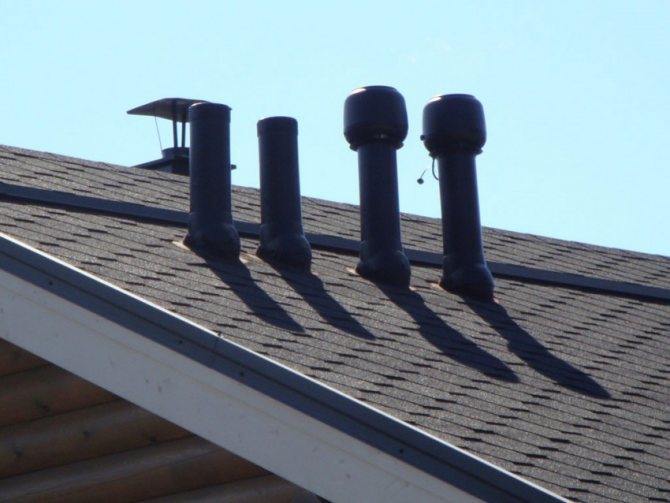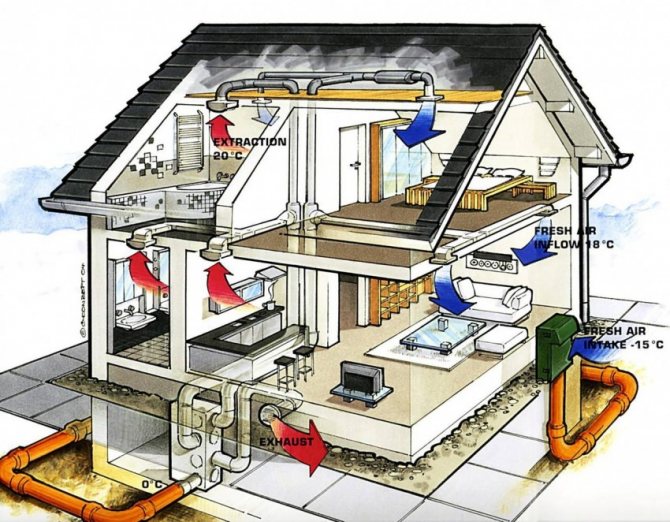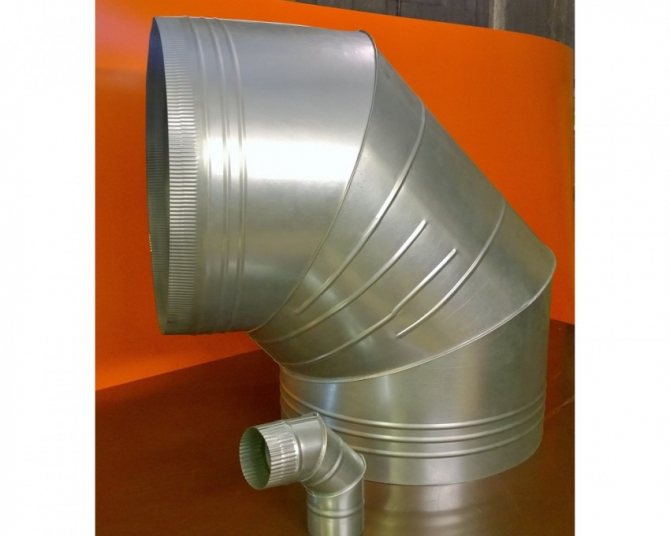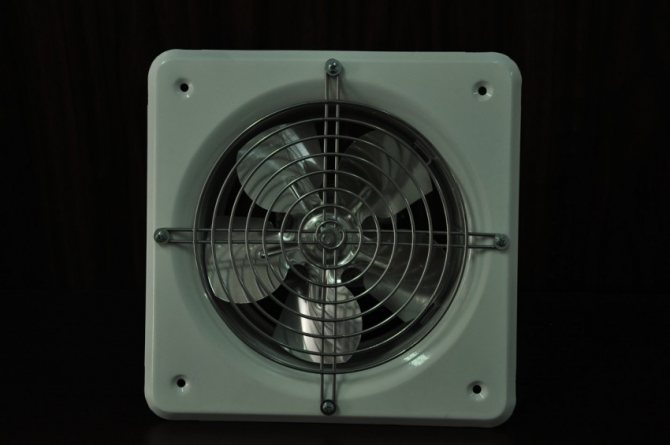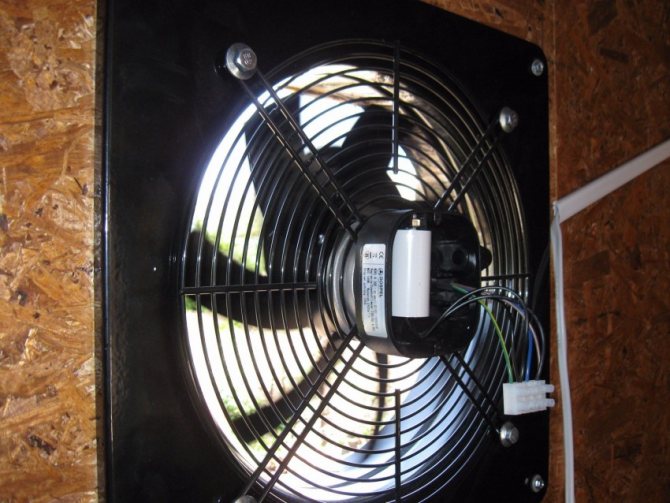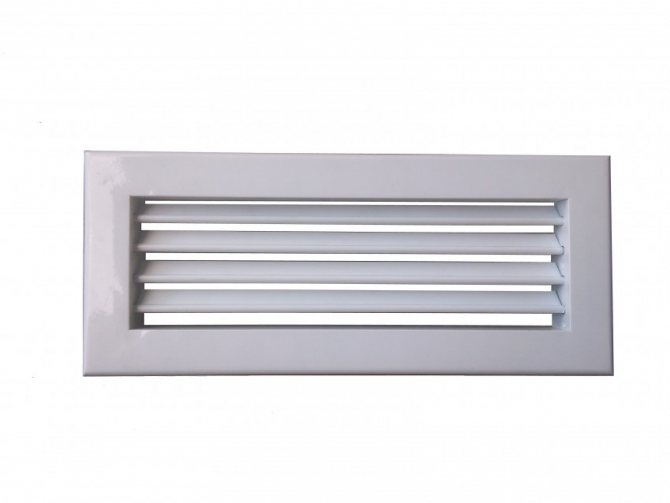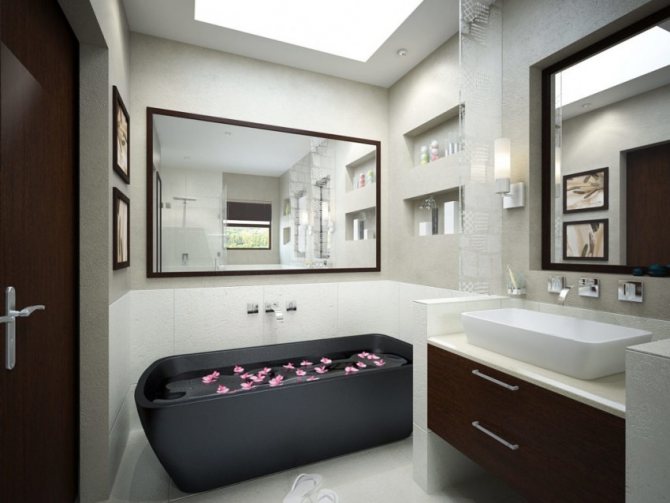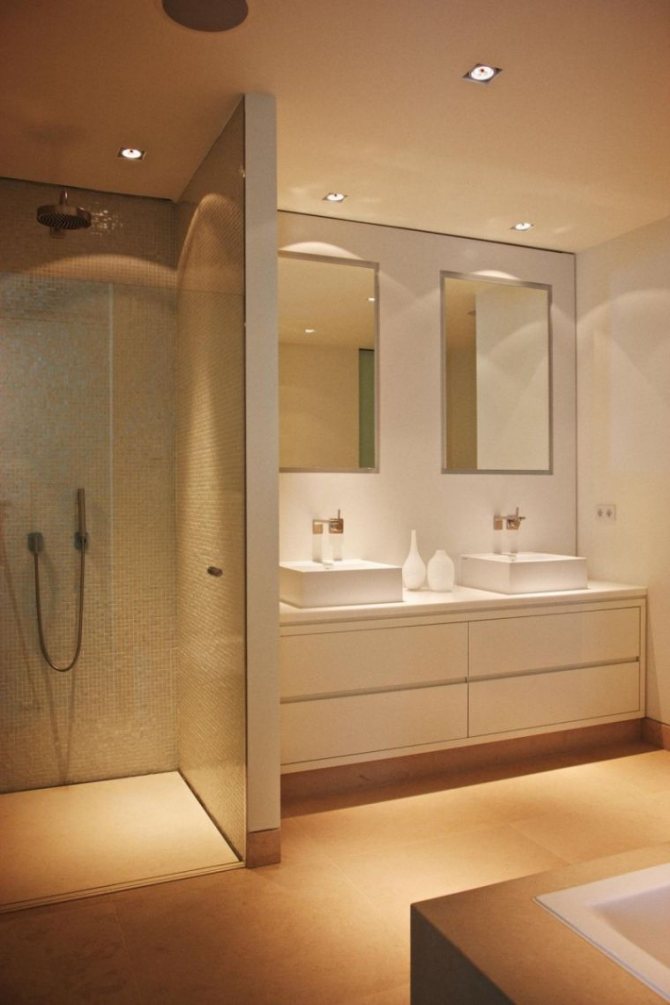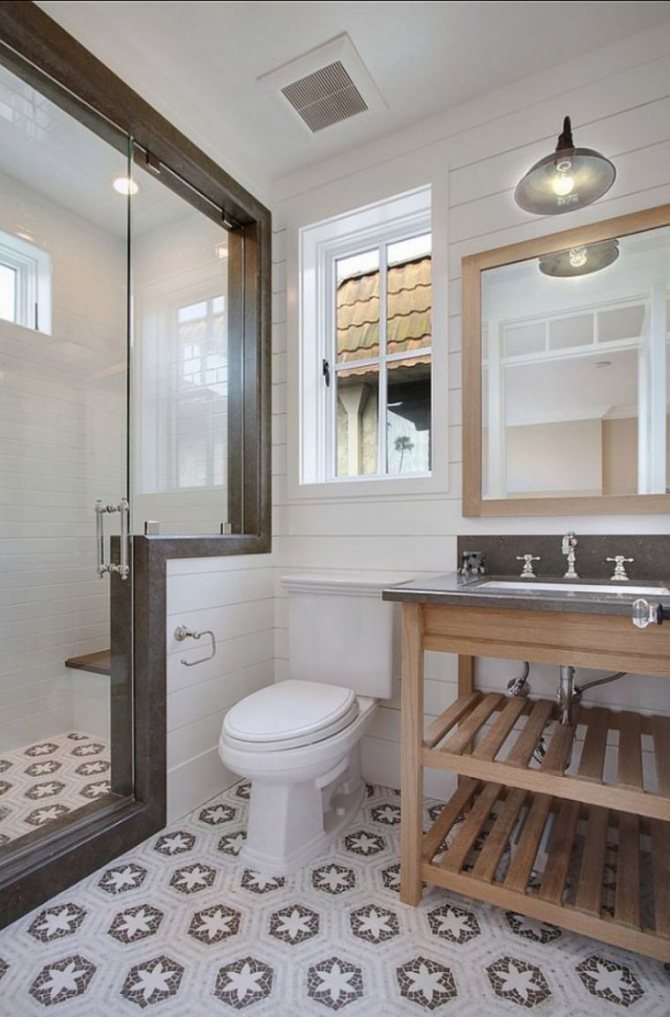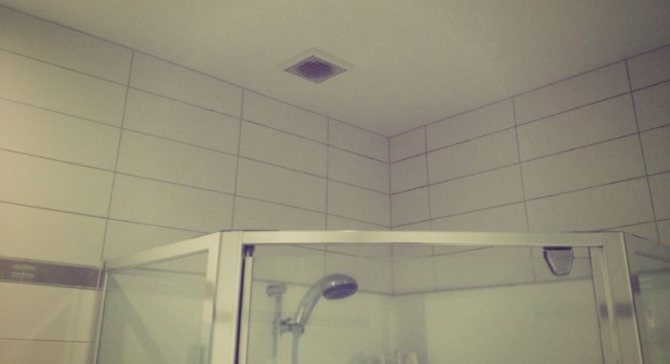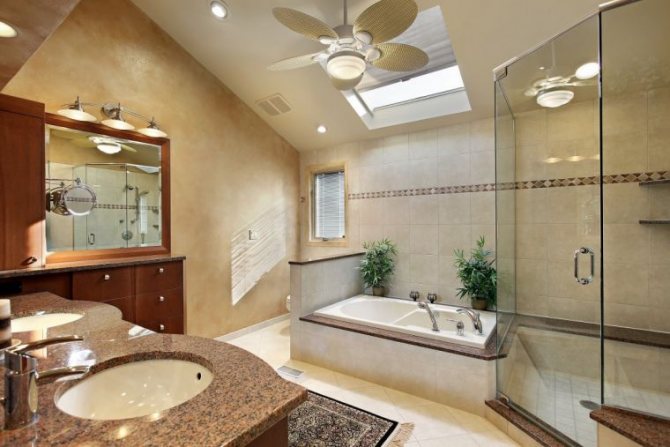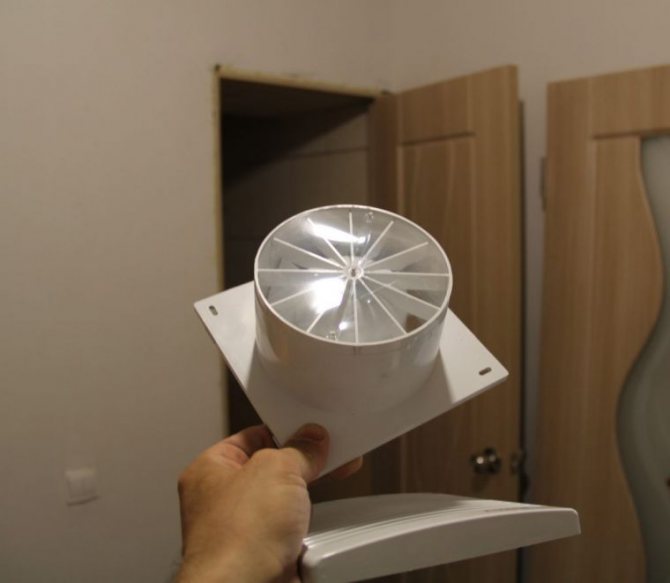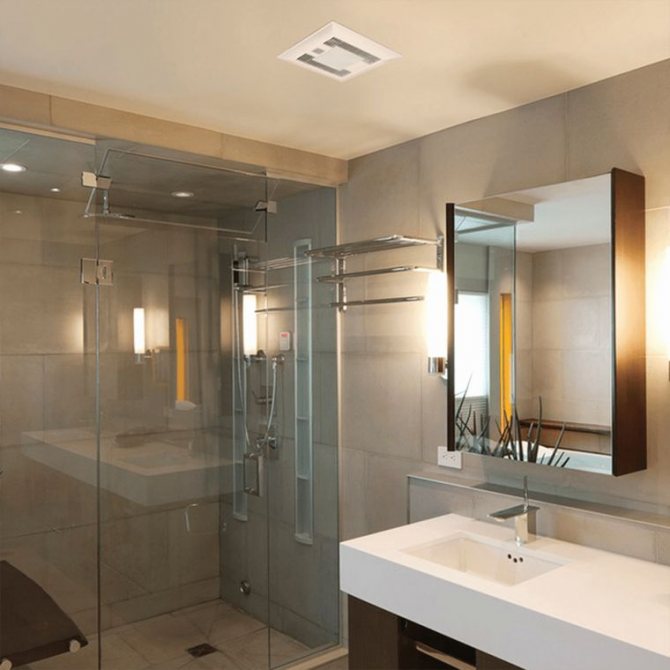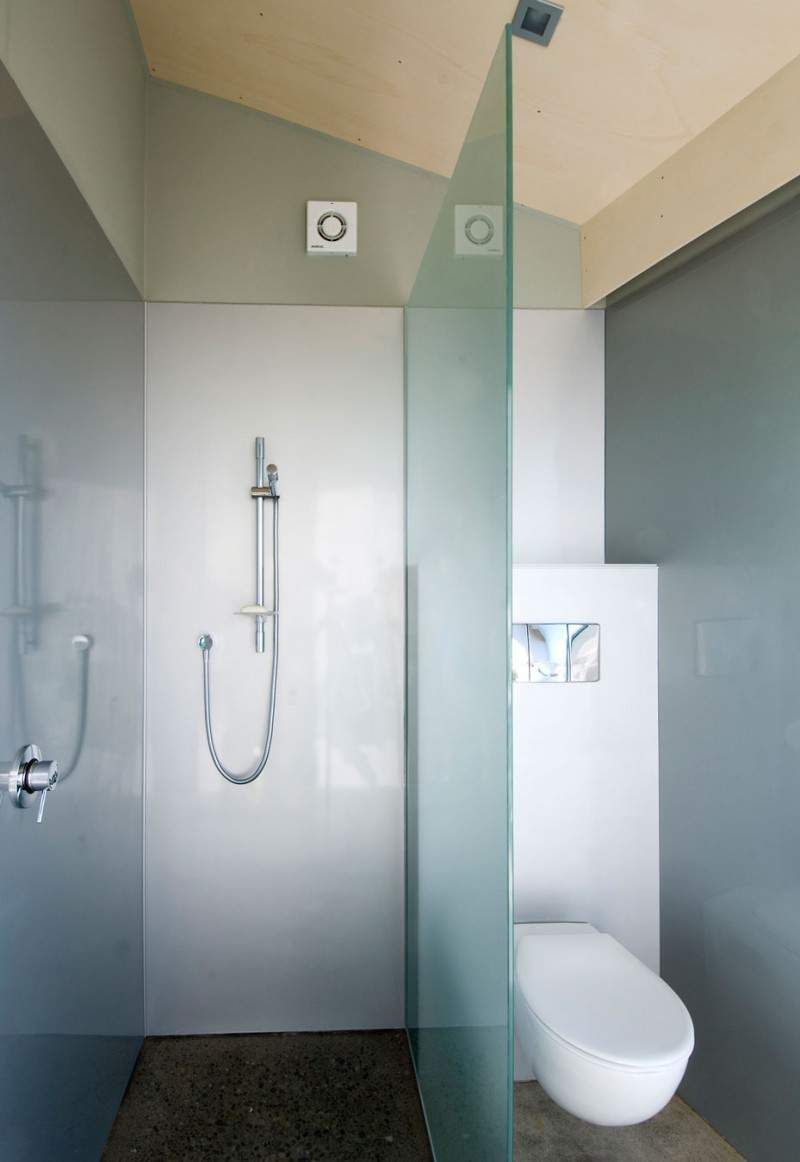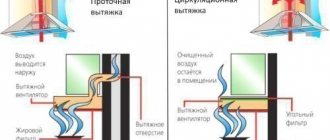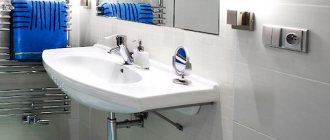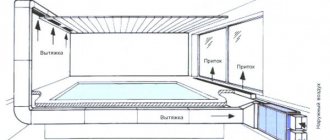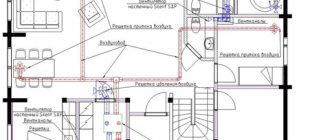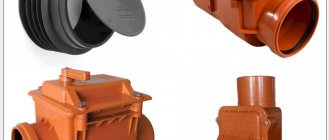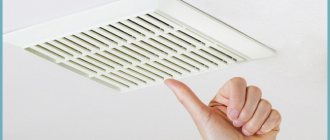Ventilation of the bathroom must be necessarily equipped to ensure comfortable conditions, prolong the service life of finishes and furniture.

An extractor hood for the bathroom is installed to ensure the efficiency of the ventilation system.
Classification of ventilation systems
Exhaust ventilation in the bathroom ensures correct air exchange. This eliminates the problem of unpleasant odors, the formation of mold and mildew, high humidity.


It is especially important to install the hood in combined bathrooms.


The main functions of the hood in the bathroom:
- ensuring air exchange;
- elimination of the likelihood of developing fungi;
- microclimate support.
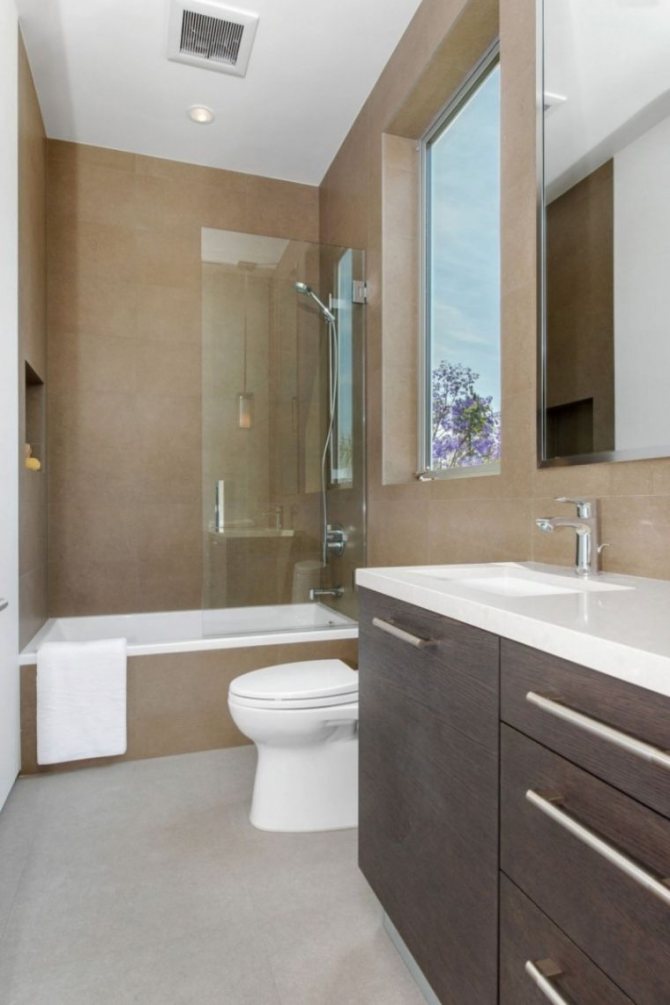

In the photo of the bathroom hood, you can visually familiarize yourself with such structures, the features of their installation and operation.
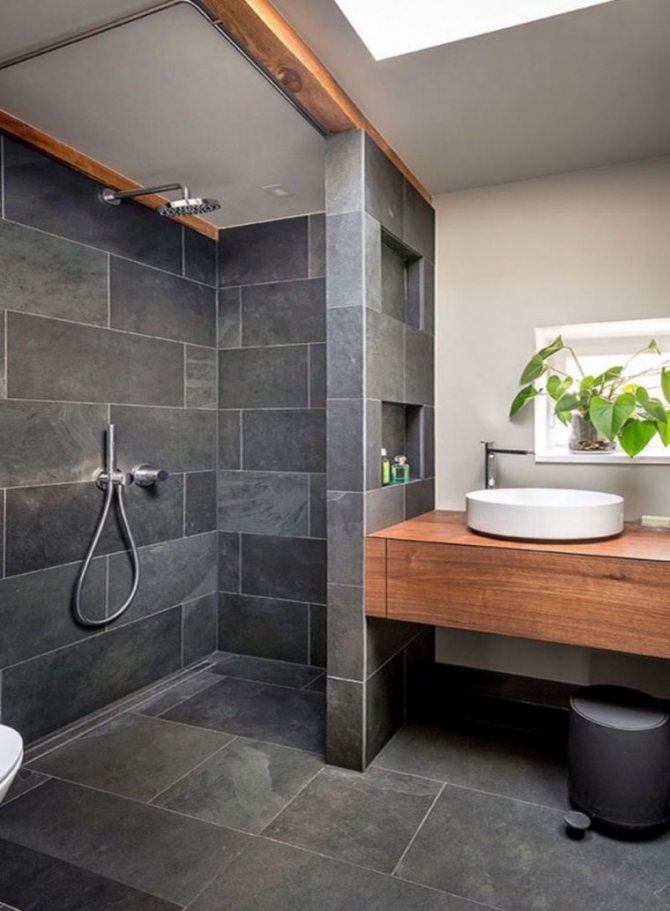

But, there are different types of hoods, which should be chosen based on the characteristics of the room.
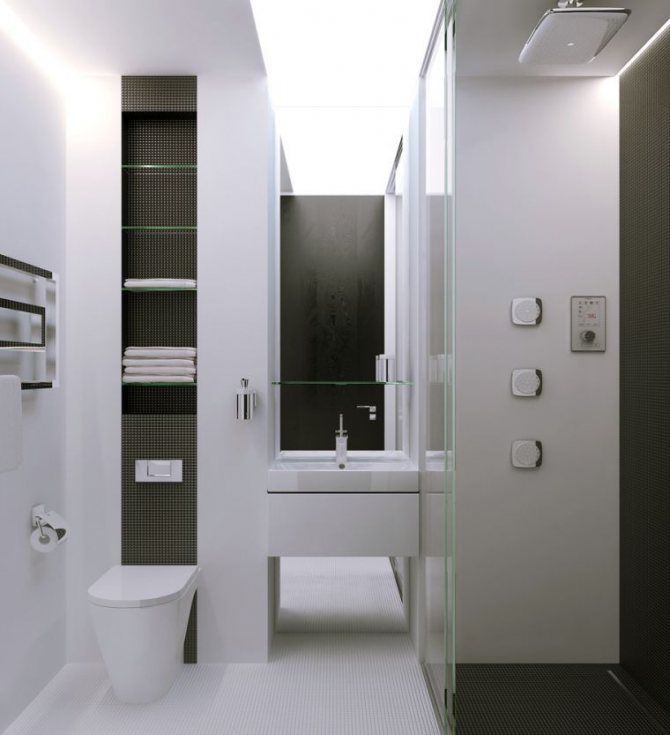

Additional functions of innovative hoods
Timed devices are equipped with additional functions. The most popular is the presence of a valve that prevents the return of air into the room.
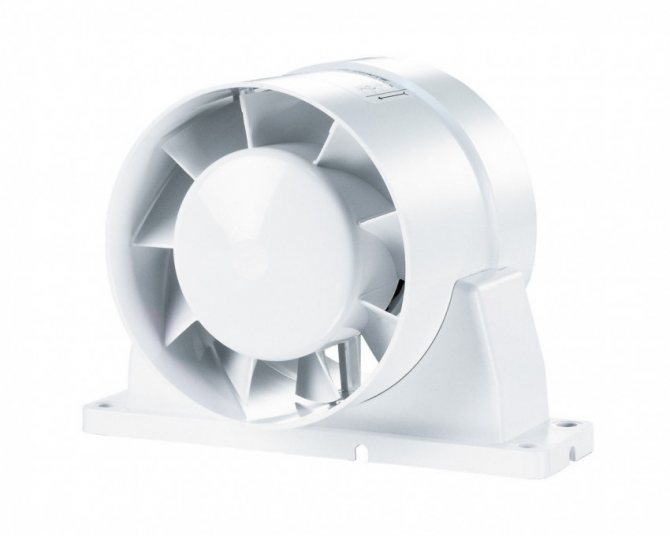

This opportunity is necessary for multi-storey buildings so that unpleasant strangers do not penetrate into the home. But the residents of suburban housing construction will be satisfied with an adjustable-type diffuser, which is designed to control the amount of air thrown out.
Natural extraction
Natural extraction involves the removal of air from the room through a ventilation duct. This ventilation system is developed at the stage of building design.
For the system to work effectively, fresh air must be supplied to the room. For this, ventilation holes are made in the door or above it.
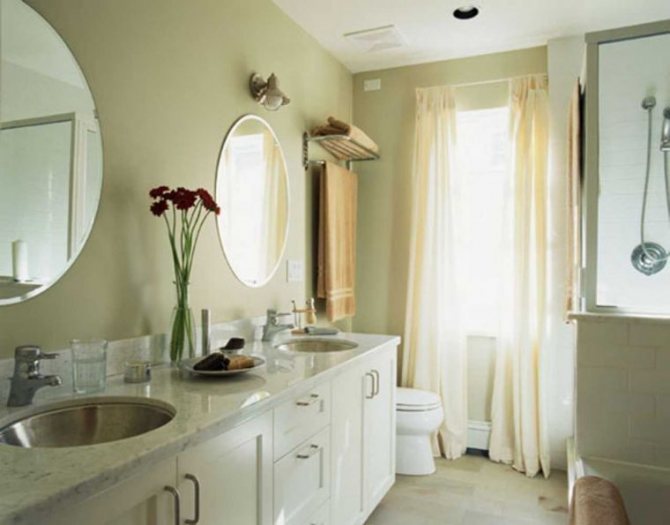

To check the efficiency of the system, you need to provide a draft in the room by opening a window or door.
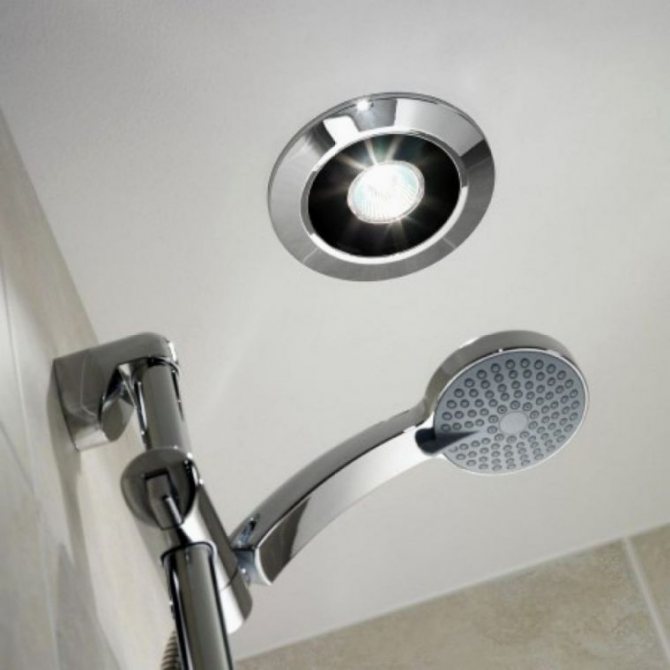

Attach a piece of paper to the ventilation grill, if it is attracted to it, the system is working correctly.


The most effective and simple way to make an extractor hood in the bathroom if the natural ventilation is not functioning properly is to provide forced air exchange.


For this, fans are used.
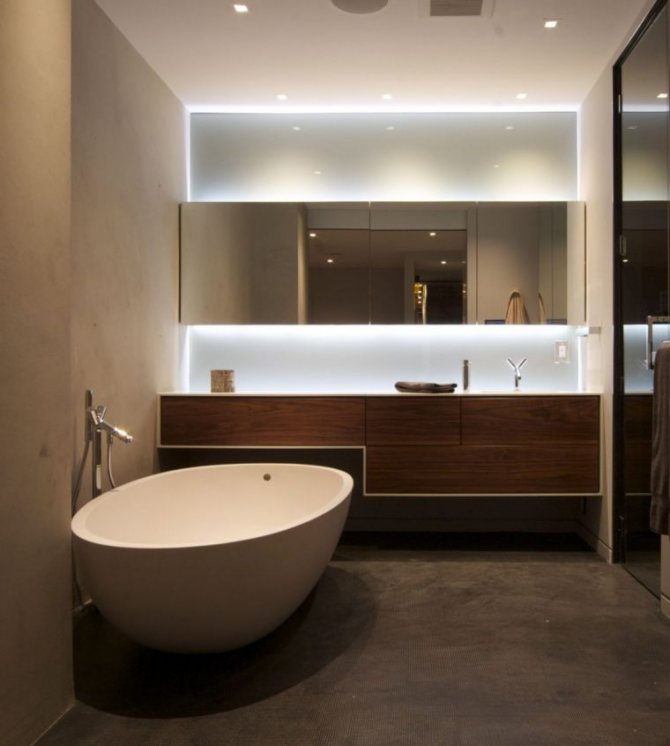

Standard hood
A wall-mounted hood helps to avoid these problems by providing sufficient ventilation in such a small space. But over time, the standard ventilation system begins to malfunction. This could be due to:
- the presence of debris in the ventilation shaft;
- location of the apartment on one of the top floors;
- high temperature and humidity.
Related links: Café au lait kitchen - how to beat a familiar combination


Fan types
In the shops where you can buy a hood for the bathroom, there is a fairly wide variety of forced fans.
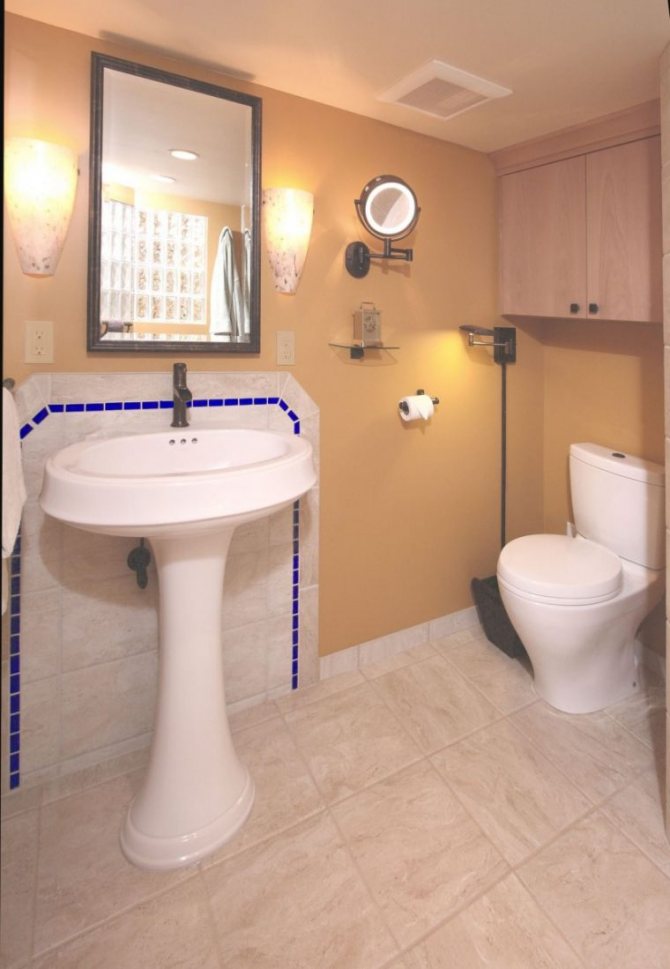

They are divided into different types according to the following criteria:
Location: invoices and embedded. The first ones are mounted at the entrance to the ventilation duct. They are very easy to install and inexpensive.
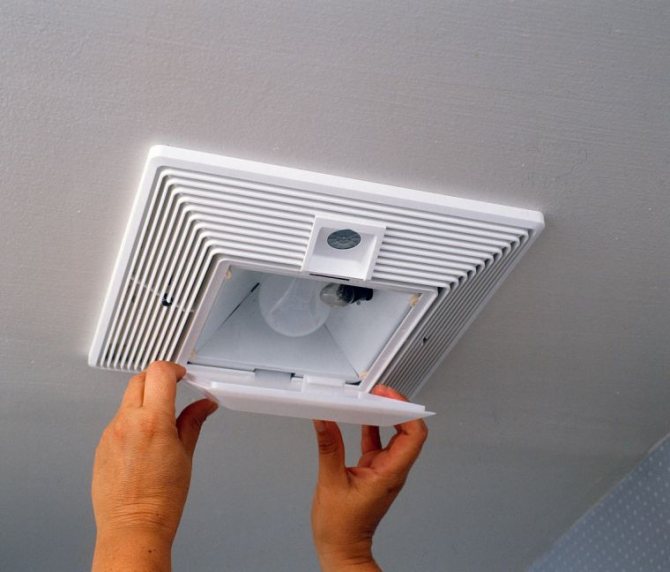

Built-in fans are ways to serve several rooms, they are installed during the construction or overhaul of a building.


Installation location: ceiling, wall or roof.The former are usually channelized, the latter are overhead.
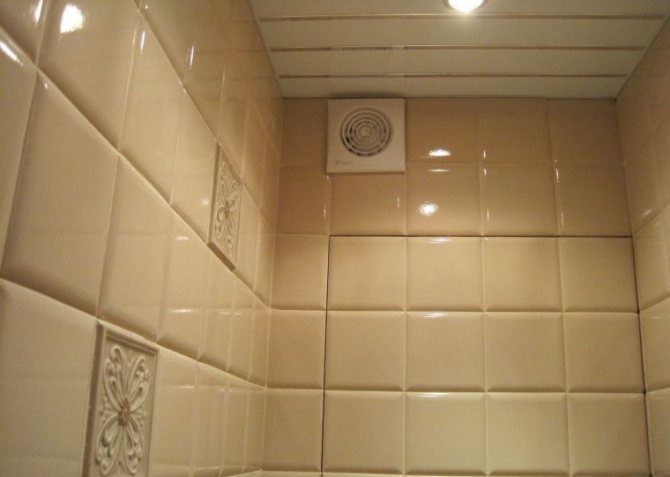


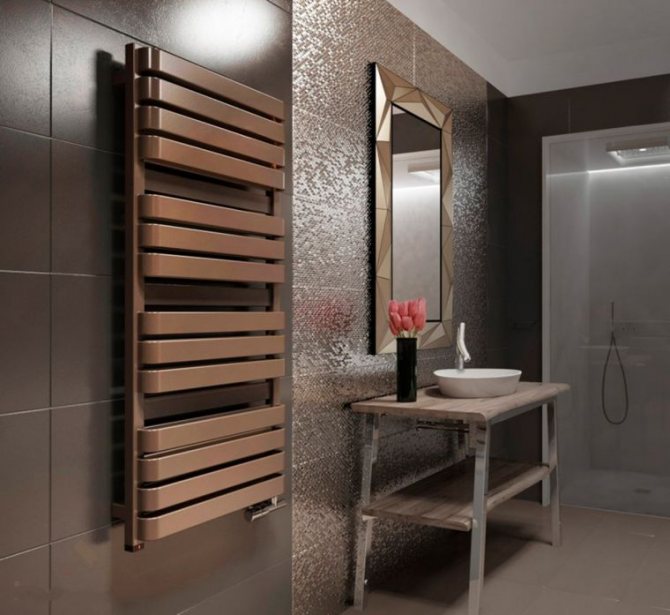
Heated towel rail for a bathroom - beautiful and unusual options for decorating a bathroom with a heated towel rail (105 photos)- Bathroom in Khrushchev - beautiful design solutions and real photos of stylish renovation in a typical bathroom (85 photos)
- Pipes in the bathroom: simple and neat installation options and tips on how to hide communications beautifully (90 photos)
Models for roofs are installed as part of integrated supply and exhaust ventilation, mounted under the roof.
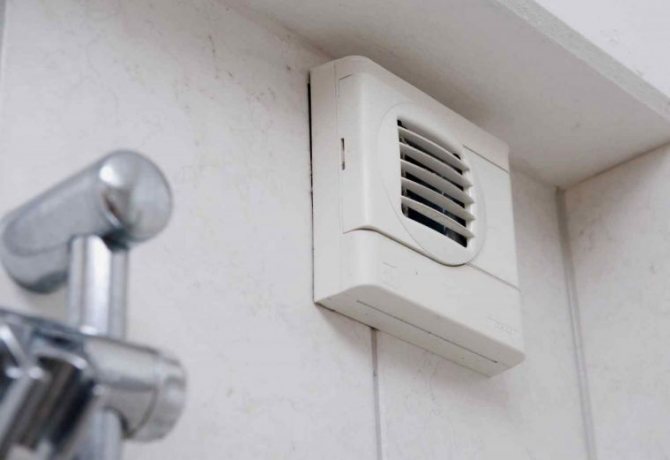

By the technology of functioning: bladed and centrifugal The first are axial and radial. Air is removed by vane rotation.
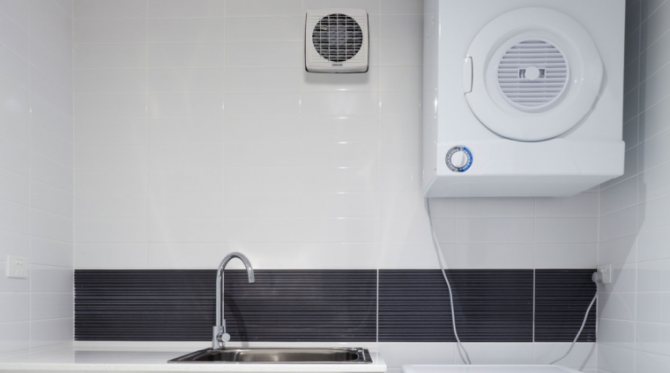

Centrifugals generate centrifugal force within their structure.
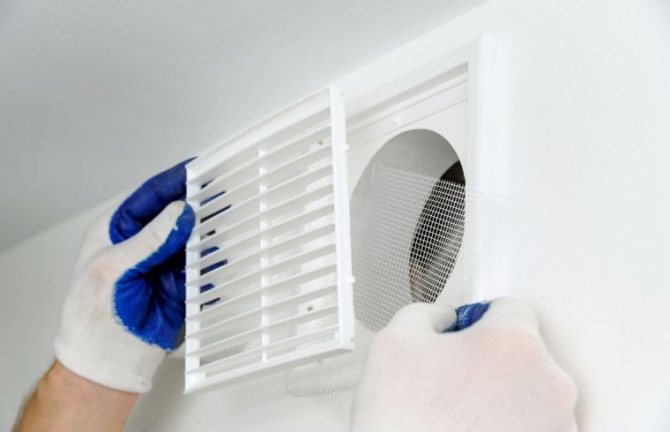

For additional functionality (with a check valve, timer, light, humidity, motion sensors, etc.).
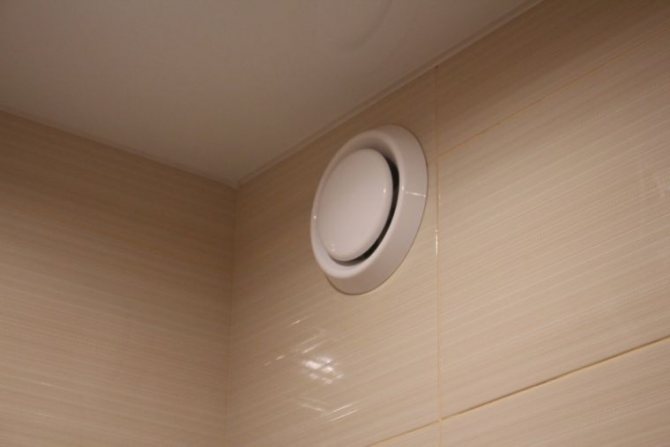

Starting method: mechanical and automatic. The first ones need to be started manually with a separate button. Automatic ones start independently according to the set settings.



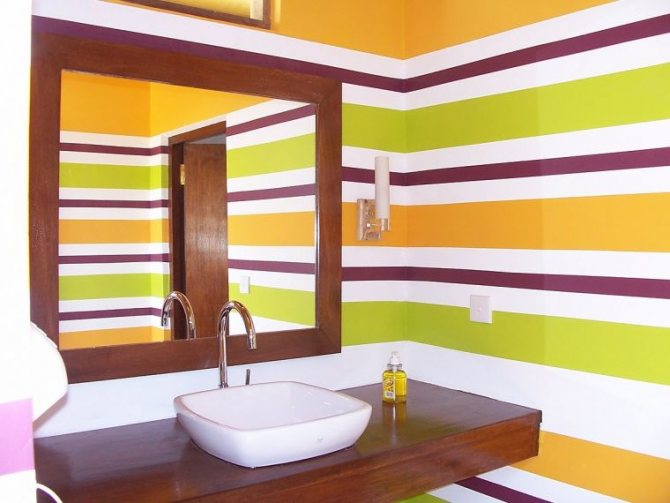
Bathroom walls - beautiful design ideas and stylish bathroom design options (90 photos + video)
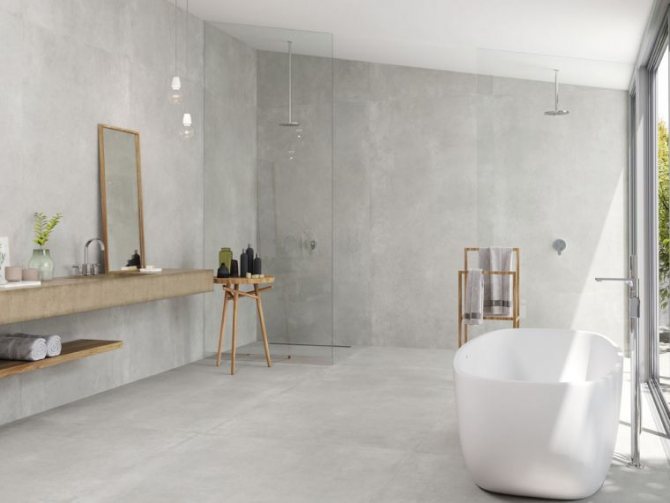
Bathroom design ideas - 155 photos of stylish interior selection ideas and bathroom design ideas
- Bathtubs for the bathroom - tips for choosing and placing. Ideas for small bathrooms and selection for interior design (135 photos)
Always install a non-return valve. If it does not come with the fan, buy it separately. It will eliminate the possibility of air flow from the ventilation duct back into the room.


If you need a silent bathroom hood, choose the appropriate fan. All models emit noise, but the lower the level, the more comfortable it will be in the room.
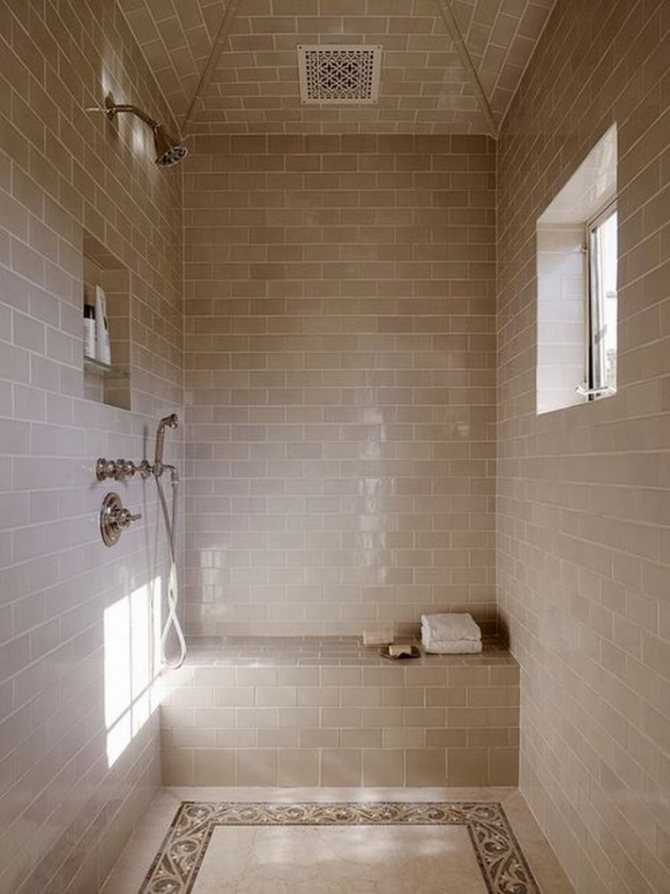

This parameter is always indicated in the technical characteristics of the device.
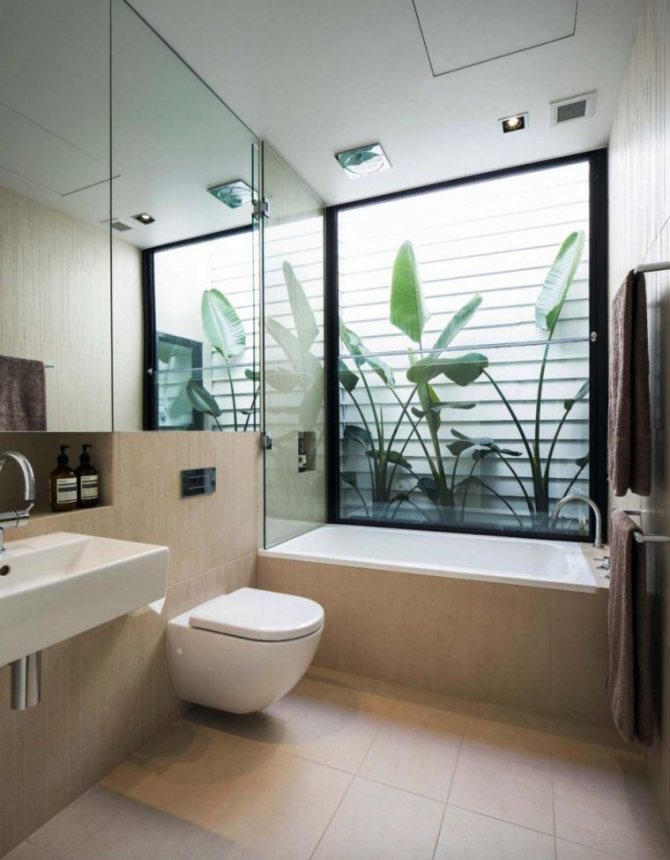

How the hood works
A standard indoor hood works according to the conventional “pull-out” principle. This happens due to the different air pressure inside the room and in the ventilation pipe. The chimney works on the same principle, drawing out both smoke and air entering the apartment through doors and windows.
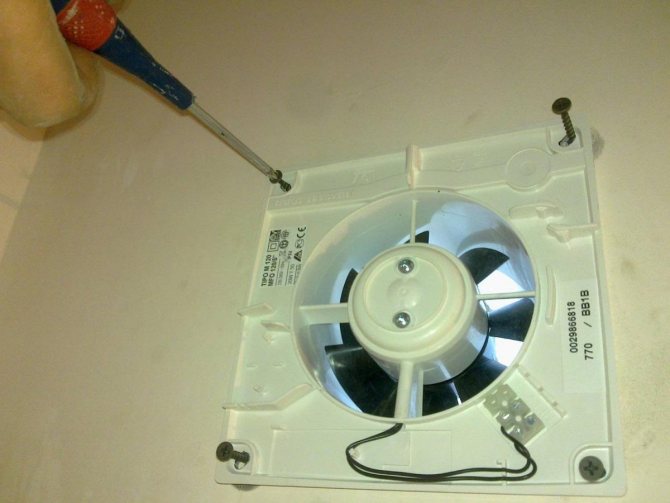

If the air flow is too weak, or its temperature exceeds 20 degrees, then the standard hood actually stops working. In such a situation, it is required to install an additional ventilation system, which starts both independently and using a switch.
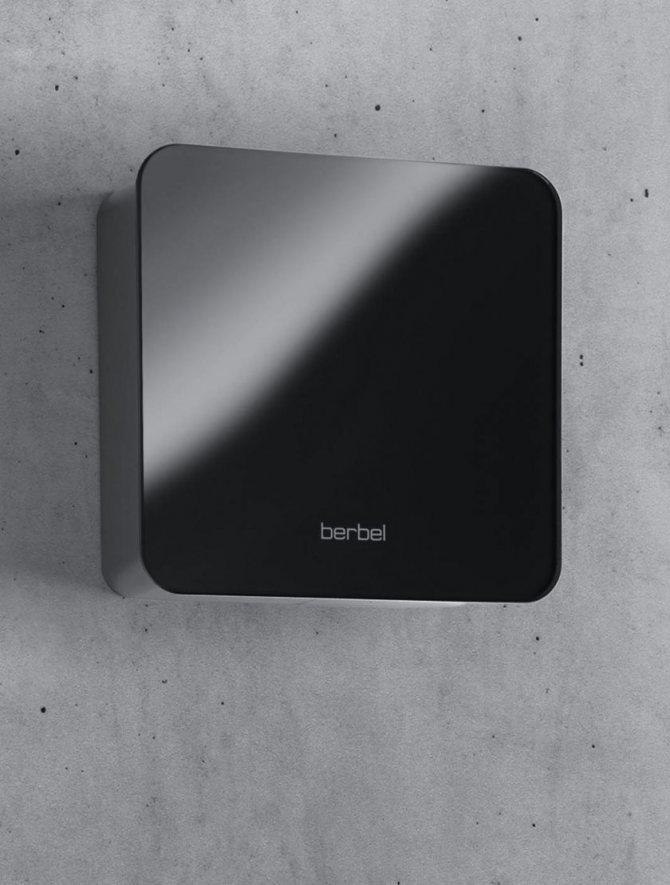

Fan selection
When choosing an exhaust fan, be guided by the following criteria:
- performance. Depends on the size of the room. The larger the room, the more powerful the fan must be;
- noise level. It is better to choose a silent model that emits a noise level of no more than 25 dB;
- safety requirements. The fan must be designed to protect its electrical and electronic components from moisture, which is inherent in the bathroom. Therefore, choose models designed specifically for bathrooms.
How to calculate the extraction power?
Speaking about the classic (universal) formula for calculating the power of the hood, it is worth remembering that this is not the only option, but the simplest, and most importantly, it works. To calculate, you need to measure the area of the kitchen and the height, then multiply all the data and multiply the result by a factor of 10-12 (the amount of new air entering the room per hour). If we take into account the norms of SES, air renewal in one hour should occur about 12 times.


If it is necessary to calculate the performance of the hood, if the air duct is already clogged and it is not planned to clean it, you need to multiply the resulting number by two more. When buying a new hood, it is advisable to choose a model, the productivity of which will slightly exceed the resulting number.
Ventilation system maintenance
The hood in the bathroom needs to be serviced regularly. Clean the system from dust and other contaminants.
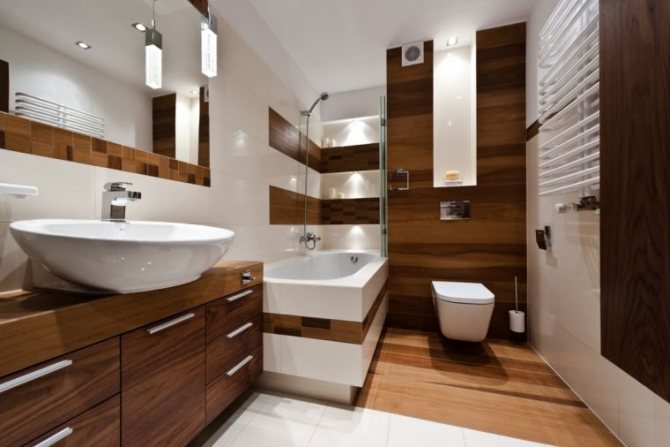

Inspect the condition of the fan periodically. When working with electrical appliances, always de-energize the room beforehand.
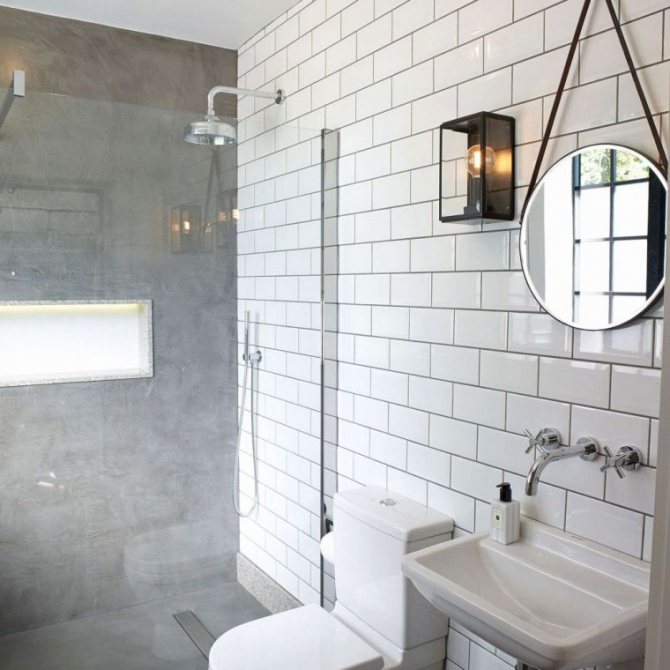

Disassemble the fan, clean all plastic elements from dirt. Dismantle and clean the propeller. Clean the motor with a brush and lubricate with engine oil.
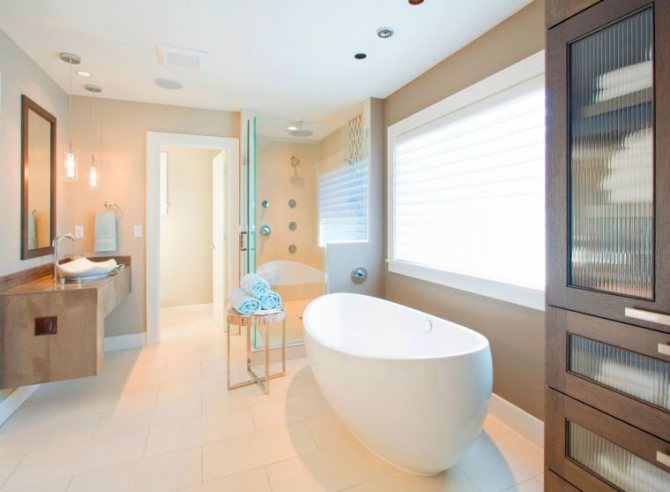

Check the condition of the bearings, if they are worn, install new ones. After servicing, reassemble the fan and reinstall it.


The ventilation duct itself at the installation site of the fan also needs to be cleaned of dirt, since dust will collect here and various dirt will settle. This not only reduces the efficiency of the system, but also entails health risks.
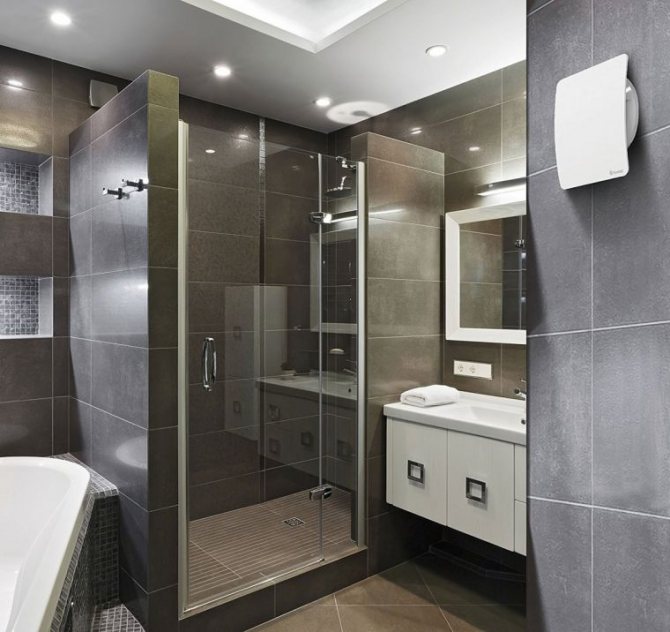

Ventilation system design
The creation of any hood begins with writing a technical assignment. It is this that will allow you to correctly assess the situation and understand how to proceed further.
When registering the terms of reference, the following is taken into account:
- location toilet, bathroom, other premises, engineering objects that may affect the creation procedure, the efficiency of the hood;
- volume of roomswhere ventilation is needed;
- sealing level all housing, bathroom, toilet.
The last point is also important and cannot be ignored, since modern doors and windows lead to a violation of natural air exchange. And a correct assessment of the situation will help identify this and select equipment that can solve the problem.
Step # 1 - determining the right amount of air
The room will have a healthy microclimate, if you do not just use any separate element in the form of a ventilation hole or fan, but equip a complete system based on the laws of physics.
At the stage of creating the terms of reference, a number of important nuances are taken into account. For example, how many people can be in the bathroom at the same time.
This is true for situations when the specified room is non-standardly large and full of various equipment. Which, for example, can be a multi-seat or hot tub. The reason is that the more people are in the room, the more actively the air is polluted.
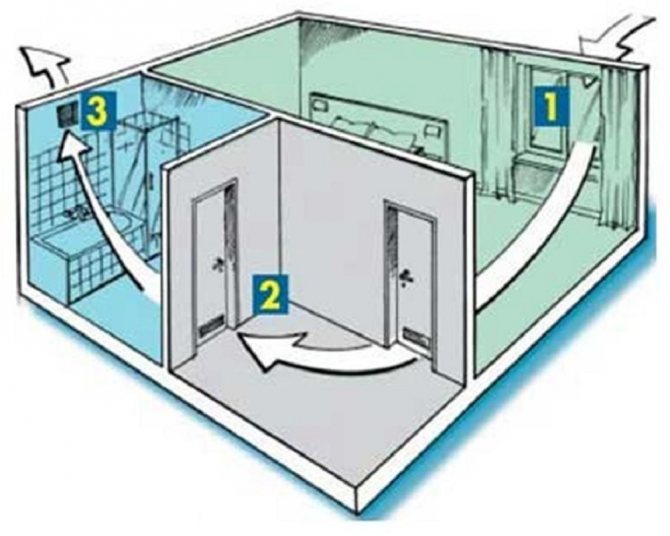

In order for the air to become clean, it is necessary to create an inflow of fresh air masses (1), ensure their supply to the desired room (2) and the removal of contaminated air outside the bathroom, toilet (3). All of these procedures can be carried out in a natural way, if necessary, you can use equipment that will increase productivity, efficiency. In order for the listed processes to help organize the right work on the arrangement, you need to start with planning, that is, with a project
In addition, when writing the terms of reference, they find out the requirements that must be observed when creating ventilation. So these include the volumes of air required for the normal functioning of the premises.
Air exchange rates:
- bath - not less than 25 cubic meters m of clean air every hour;
- restroom - from 50 cubic meters m for every 60 minutes;
- combined room - per hour from 50 cubic meters m;
- the room where the bidet or sink is located, - not less than 25 cubic meters m.
If the bathroom is equipped with a jacuzzi or shower, the standard is at least 75 cubic meters. m, and hourly. In non-standard equipped bathrooms, the volume of passing air per hour must exceed 150 cubic meters. m.
All of the above standards are the minimum permissible and do not always ensure the maintenance of an optimal microclimate. Therefore, they are often corrected upward.
What is desirable to do at the preparation stage, but in many cases the error can be corrected after starting to use ventilation. Although in the latter case, financial losses are inevitable.
Step # 2 - calculating basic parameters
An important indicator is the rate of renewal of the volume of air in the premises. As it will help you to purchase the appropriate equipment or configure it correctly.The average statistical value of the specified parameter is a change of 4-8 air volumes per hour.
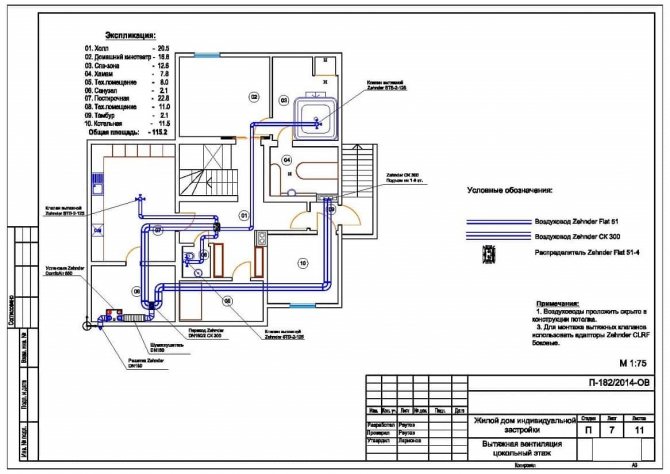

The figure shows a private house ventilation project. Where the air extraction in the bathroom and toilet is only one of the subsystems. As you can see, design is a complex process. But in standard apartments everything is simpler and the whole procedure will consist in drawing up the terms of reference and creating a simple scheme
When choosing a ventilation method and the necessary equipment, the speed of movement of air masses should be taken into account - it should not exceed 0.3 m / s. If it is higher, then there is a high probability of drafts, which negatively affects the comfort of living and the health of users.
An important point is the temperature of the supplied air.
It should be in winter:
- bath and combined bathroom - about + 25 ° С;
- individual toilet room
- about + 18 ° С.
Humidity should always be in the range of 50-65%, since deviations in either direction will lead to the fact that the microclimate will be considered unhealthy.
Step # 3 - calculating system power
The result of drawing up the terms of reference is the calculation of the acceptable exhaust power.
What the formula is used for:
L = n * V,
Where
- L - the required power indicator of the fan;
- n Is the rate of air exchange;
- V - the volume of the bathroom, toilet.
Although such a calculation is the simplest, it allows us to identify the main parameters of the system.
At the design stage, it is necessary to determine the type of ventilation system.
There are two possible options:
- Natural... The most affordable and low-cost method, but today it is becoming less and less relevant, since air exchange is disrupted due to the tightness of housing, especially in winter. For this reason, the hood becomes ineffective.
- Forced... Requires large investments, since additional equipment is supposed to be used, for example, at least 1 special exhaust fan.
The efficiency of the second option is several times higher than natural air replacement.


When designing, it must be borne in mind that the ventilation opening with air duct should be located as far as possible from the supply air source and as close to the ceiling as possible.
In addition, forced ventilation is divided into three types:
- exhaust - in this case, the discharge of contaminated air masses is carried out into a special shaft or outside, an example of arrangement is the installation of a wall valve;
- supply - provides for the creation of air flows that displace the old;
- mixed - combines the main features of the two options described above; such a solution is more often used in cottages and private houses, using air handling units.
And also during the preparation of the terms of reference, it is necessary to determine whether the hood will be channelless or channel.
An example of the first is the ventilation system in most Soviet apartments, when there was a mine between the bathroom and the toilet, that is, no additional devices for removing polluted air are required there.
The ducts will have to be laid in housing with a non-standard layout, where there are no ventilation shafts nearby, and, accordingly, there is no way to remove the exhaust air outside the housing. This method should be used as a last resort, as it is expensive and labor intensive.
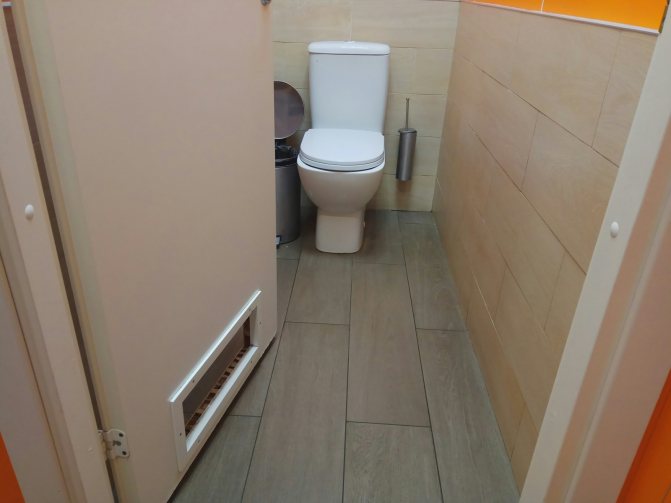

The entrance door to the toilet, bathroom must have openings for the passage of supply air, and from below. They can be decorated in the form of a decorative lattice, as in the photo, or a gap between the door itself and the frame, the floor
The noise figure of the fans should also be taken into account, if any. This figure should not exceed a moderate 35 dB.
The technical task is considered completed when all the necessary information has been collected about the future system.Any “white spots” are not allowed as this can affect the ventilation efficiency.
Step # 4 - completing the ventilation design
An important feature of the technical assignment described above is that the information collected during its preparation often allows you to get all the necessary information.
And this makes it possible to do without drawing up a project, but this feature applies mainly to simple cases when there is no need to conduct channels.
That is, having all the information, it will be enough to create a simple diagram of where the individual elements of the system's structure will be located and which ones.


It should be understood that channeling should be taken as a last resort. And, if there is no choice, then it is better to use plastic boxes, as indicated in the photo, as this will be the most practical and durable solution.
If the case is difficult and you have to lay canals, then the project will be needed, but it will be better when specialists are engaged in such work.
Because, this type of ventilation is quite expensive, and even minor flaws can lead to inefficiency of the entire system and the accumulation of polluted air in the premises.
The full scope of design consists of the following stages:
- Calculation of the required volume of air exchange. This procedure is performed even in the process of drawing up the terms of reference.
- Development of a schematic diagram with the calculation of the cross-section of air ducts (pipes that bring air to the outside), sound pressure in the system (noise level). In most cases, this is not difficult, since all that is required is to purchase a fan, the sound of which during operation does not exceed a moderate 35 dB.
- Preparation of drawings.
- Preparation of documentation for related work. For example, electricity. That is, it is necessary to determine the place where the fan is connected to the network, the control method.
The design of ventilation in the toilet or bathroom must be done during a similar procedure for the whole house so that it becomes an organic and effective part of it.
Photo of bathroom hoods
Read here: Pipes in the bathroom: simple and neat installation options and tips on how to hide communications beautifully (90 photos)
The formula for calculating the performance of the recirculation hood
The standard calculation of the required performance of the hood for the kitchen is carried out according to the following formula:
where: N - design capacity, m³ / hour; S - kitchen area, m²; h - ceiling height, m; 12 - air exchange rate adopted by SES; 1.3 is the minimum stock factor.
Exhaust capacity calculator
The universal formula allows you to calculate the parameters under the following assumptions:
- when using an electric stove;
- kitchen with closed doors and windows, separated from other rooms;
- the shape of the room is rectangular.
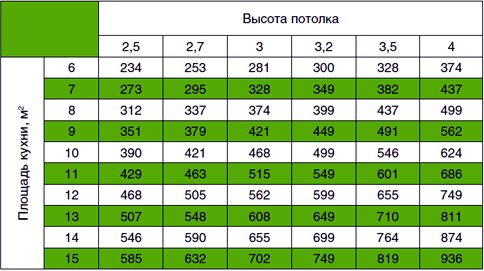

It is important to note that the calculation formula allows you to find out what volumes of air the device will process at maximum power and operating speed. Of course, in real conditions, the device cannot constantly operate at the most energy-consuming mode. To obtain a more accurate result, it is recommended to add 15–20% to the final figure, thus, you will calculate the performance of the cooker hood for effective operation in medium mode.
If a gas stove is used for cooking, then the coefficient 12 should be changed without hesitation to 20. In this case, in addition to vapors, ventilation will have to remove gas combustion products from the kitchen. If the structure has a charcoal filter, it is worth adding 20 to 30%, since it creates additional resistance for the incoming air.

